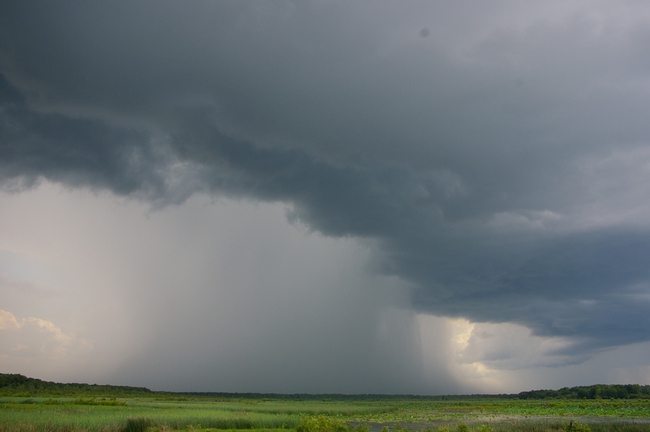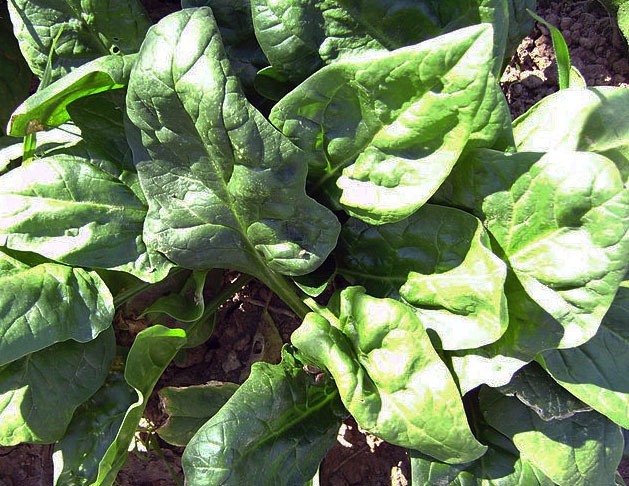Posts Tagged: Michael Cahn
El Niño isn't filling Monterey County lakes as quickly as other state reservoirs
Despite frequent rain since the New Year, the water levels in two Monterey County lakes aren't rebounding at the same rate as drought-stricken lakes in other parts of California, reported Ramin Skibba in the Monterey Herald.
In December, Lake Nacimiento was at 16 to 17 percent of capacity. It has now risen to 22 percent. Lake San Antonio, which dropped to 3 percent of capacity last summer, is still at 3 percent now. It is so low that engineers refer to it as a "dead pool" because gravity cannot pull water out of the reservoir when it is at that level.
The Monterey County lakes don't fill as quickly as other lakes - such as Shasta, Folsom and Oroville - because they are fed by relatively small watersheds. Nacimiento and San Antonio were built in the 1950s and '60s for flood control and to recharge aquifers. With dropping aquifer water levels, farmers have had problems with their wells, the story said.
“Some growers' wells pull in as much air as water, so that they need repairs or lose the wells entirely. I've seen well drillers around, which indicates re-drilling,” said Michael Cahn, a UC Agriculture and Natural Resources Cooperative Extension advisor in Monterey County. “This is a cost for agriculture.”
As they drill deeper, farmers also risk more seawater flooding in, contaminating the limited water supply. It was seawater intrusion that originally led to the construction of the Nacimiento and San Antonio dams.
Cahn was quoted at the end of the story with a positive message.
“The aquifers are currently at the lowest levels ever recorded, but they can go back up,” he said.
UC app helps growers monitor water and fertilizer use
A UC Agriculture and Natural Resources scientist will hold a workshop in April to teach farmers how to use an online application available free from UC ANR that calculates the precise water and fertilizer needs of their crops, reported the Salinas Californian.
CropManage compiles information about the crops' soil, growth and water needs from years of UC ANR Cooperative Extension Research, said Michael Cahn, UC ANR Cooperative Extension irrigation and water resources advisor in Monterey County.
"It's repackaging research into a format that's accessible to everybody," said Cahn, who developed the program."It takes 10 steps to do the calculations by hand and (CropManage) does it in a second."
Using CropManage helps farmers avoid wasting expensive fertilizer, reduces the likelihood fertilizer will leach into the groundwater, and makes efficient use of water, a factor that is increasingly important as the state struggles through what may be the fourth consecutive year of drought.
CropManage can currently be used for head and romaine lettuce, broccoli, cauliflower, cabbage and strawberries. It will expand to other crops in the future.
"We want to develop things carefully," Cahn said. "We're not trying to make money on this, we're just trying to help the growers."
The workshop will be from 8:30 a.m. to noon Thursday, April 2, at the Monterey County Agricultural Center Conference Room, 1432 Abbot St., Salinas. RSVP by email to Michael Cahn at mdcahn@ucanr.edu.
Online tool helps farmers make decisions that save water
Central Coast farmers can cut back irrigation water by 50 percent over the course of the lettuce or broccoli growing season and still harvest the same yield using an online decision tool developed by UC Cooperative Extension.
Michael Cahn, UCCE advisor in Monterey County, developed CropManage and is now conducting field trials comparing crop water use and nitrogen use under standard growing practices and the recommendations made by the web-based tool. So far, research results are in for lettuce and broccoli, showing dramatic reductions in both water and fertilizer use when the computer aids decisionmaking. Current crops supported by CropManage are romaine and iceberg lettuce, broccoli, cauliflower and cabbage. Additional crops will be added in the near future.
Cahn described and demonstrated the computer program in a 25-minute video that is part of the UC California Institute for Water Resources online video series. The series consists of presentations featuring UC and other experts speaking on topics aimed at helping farmers and all Californians better understand and cope with drought.
Very efficient use of water minimizes the amount of water that will leach below the crop's rootzone, where it can't be used by the plant and can contaminate the water table. Factors that must be considered in achieving such efficiency include the rooting depth of the crop, the plant's stage of growth, the amount of water stored in the soil, the irrigation system uniformity, the water application rate, the salinity in the water source and the weather.
“That requires a lot of calculations in developing irrigation scheduling,” Cahn said.
CropManage gathers much of the information and does the calculating for farmers. CropManage automatically pulls up weather data from weather stations operated by the California Department of Water Resources, soil data from the UC Davis Soil Web, and research data from UC Cooperative Extension. The farmer adds information about the crop, field, and type of irrigation system being used.
“The computer program takes this information and running it through models can make water and fertilizer recommendations,” Cahn said.
The system also stores all the data for farmers, allowing growers to track their practices and demonstrate they are managing nutrients and water efficiently.
View the 25-minute below:
UC Cooperative Extension advisors help spinach growers finesse fertilizer applications
UC Cooperative Extension advisors are studying the critical balance between fertilizer application and absorption in Salinas Valley spinach crops to help farmers meet new water regulations, reported Dennis Taylor in the Salinas Californian.
Richard Smith and Michael Cahn, UCCE advisors for Monterey and other Central Coast counties, have been conducting field trials for several years to determine volume data on fertilizer application. Once growers know exactly how much nitrogen their crop is absorbing, they can more precisely apply an appropriate amount.
Smith explained that baby spinach will absorb roughly 80 percent of the nitrogen it is going to take up in the final two weeks before harvest, making timing critical, Taylor reported. Spinach harvested a few days later, called "teen spinach" uses about 100 pounds of nitrogen per acre; larger-leafed spinach can used up to 120 pounds.
“No (previous) studies had evaluated high-density planting of clipped or bunched spinach grown on 80-inch beds,” said UCCE research assistant Aaron Heinrich. “Our study was specifically designed to provide data on the nitrogen uptake characteristics of spinach and to evaluate ways to improve nitrogen fertilizer management.”
UC nitrate *quick test* protects water quality
Lettuce farmers can use less fertilizer - saving money, cutting back water use and reducing nitrate groundwater contamination risk - without sacrificing crop yield by employing a "quick test" developed by UC Cooperative Extension, the San Francisco Chronicle reported today.
With the quick test, growers can determine how much nitrogen is in the soil and use only as much fertilizer as their lettuce needs to grow.
UC Cooperative Extension farm advisor Michael Cahn told reporter Julia Scott that he helped one company use 70 pounds less fertilizer per acre and get the same yield.
The Chronicle story was focused on imposing regulations to ease water nitrate contamination in California. Cal State East Bay earth and environmental science professor Jean Moran pointed to agriculture as the primary source of the problem.
"It covers a much larger area, it's a constant input of nitrates in groundwater and you have constant irrigation and over-irrigation, which drives the nitrates deeper into the groundwater," Moran was quoted. "But if you look for new evidence of regulations on nitrate issues in groundwater, you just don't find them."

Lettuce irrigation.





